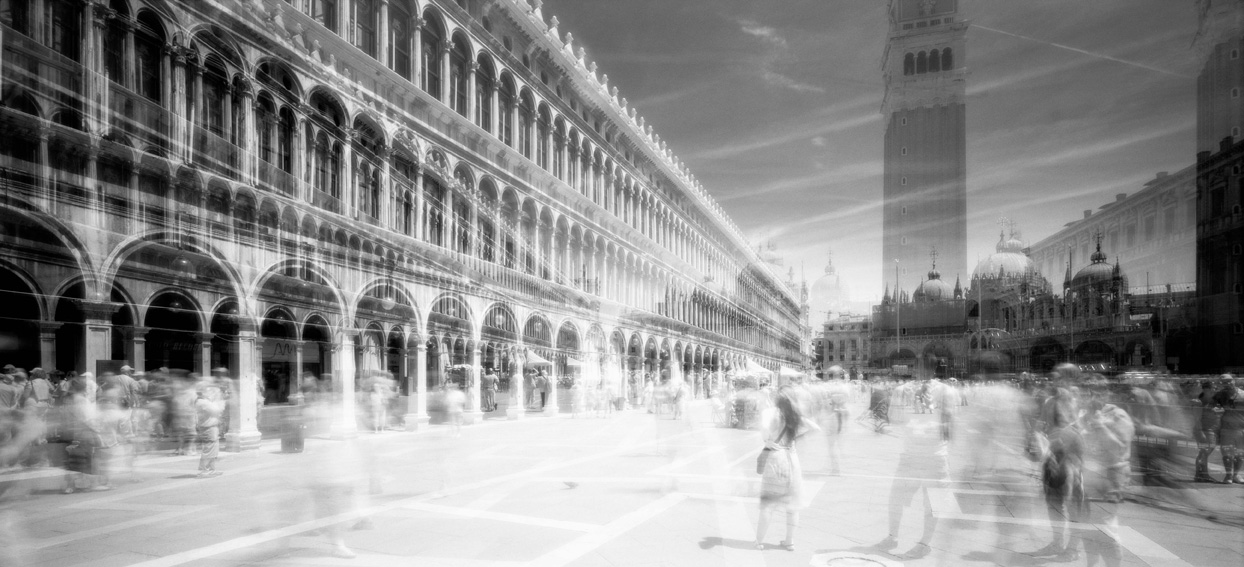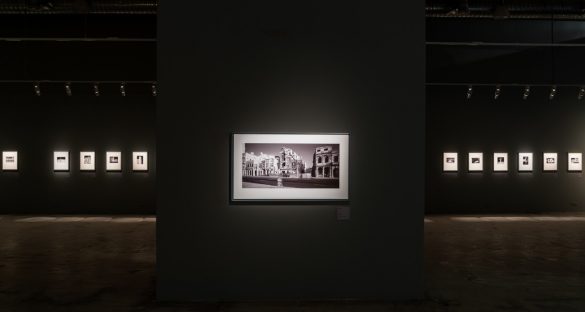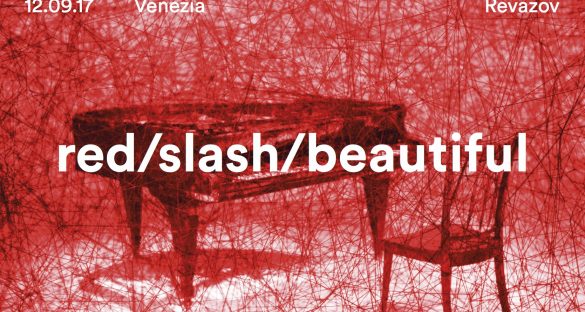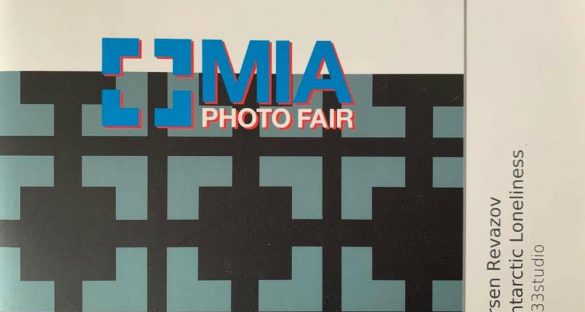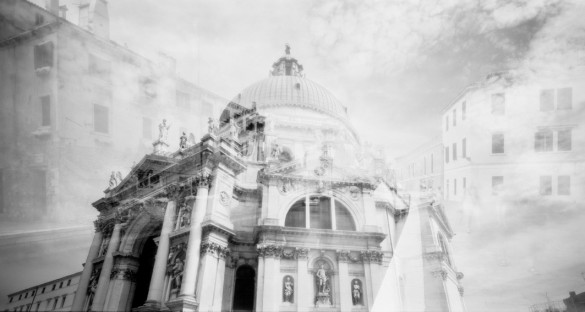Arsen Revazov gave an interview to Interior Explorer. You may read the original article in Russian or a translated version below.
To Have Your Own Style.
Not each photographer has his own studio in Venice, but Arsen Revasov has one. Not each photographer can become a participant of a Biennale of contemporary art in Venice, but Arsen Revazov has become. He has kindly agreed to tell our readers about architecture, photography and art in general and certainly about interior.
Arsen Revazov is a photographer, writer and a specialist in the field of internet technologies.
Arsen, tell us please about a studio in Venice. Is it situated in the Mozart’s house?
Yes, on the street Frezzaria, 1733. It is in a 2 minutes walk from San Marco, one minute walk from La Fenice. You can write on google maps ar33studio and see it immediately. Almost every house in Venice is connected with something or someone great. In this building Mozart has lived for several weeks and not only the gondoliers, but also a table on the house tells about this event. I have a studio there with all the equipment, includig an enlarger that weights 400 kilos. There is also a gallery.
Why have you chosen Venice?
Because Venice is the most beautiful city in the world. When one builds a more beautiful one I will move there.
You shoot a city all the time, mostly Venice. How is it better to shoot a city? What secrets does a photographer have?
If we ignore a metaphysical aspect (one has to love/feel/understand a city), I don’t like pathos. To shoot a city with narrow streets you need to have a camera lens with a shift. In order not to lift it when shooting tall buildings and not to get ugly lines coming together closer to the up. The best thing is to have a format camera. Or Alpa (Alpa SWA). Or a Horseman SP (it also has a shift). If you don’t want to spend money on all that, then you can buy a lens with a shift.
Secrets of choosing an object?
An object in the city has been chosen before you, in the case of Venice much time before you, an architect. If you like what he managed to do despite the fact whether that object is Pred or turned into an object of a popular culture or on the contrary, remains relatively unknown, you have to start thinking. In this, basically, lies the main secret – how to learn thinking. Above all, you have to give an honest answer: why your job will be interesting for an enlighted public. In a sence that it won’t be secondary (thirdly) in respect to those 10-15 million tourists, who shoot this object every year and publish on their Instagramms and Facebooks. If you have explained yourself in easy words why, then comes the technique. (It is important: to yourself and with easy words!). Unless you haven’t explained, it’s better not to waste film, but go and drink coffee. Or prosecco. Or a spritz. A choice of an object is easier when you shoot nature. But there are no cafes around, that is why nowhere to relaxe.
And what is “an artistic expression”? In your opinion?
It is absolutely the same thing as a usual expression. But made in an artistic language. As well as each expression it can be original and interesting (by good artists), but can be also dull and banal (in most of the cases). So an artistic expression in itself is a kind of a communicational, informational message, as a rule, with some kind of aesthetical, and often with an ethical dominance, that is created in order to provide a reaction of a number of observers (like-don’t like, cool-trash), sometimes of a pretty narrow circle. To the limit this circle can be narrowed to an artist in himself. In other words, he espressed, then looked at the result.
But producing an expression when nobody sees you, neither you or a God
– is pretty difficult. That is why at least any creature whose reaction an artist could see is necessary.
Let’s talk about technique?
The technique in a material sence is important. As well as the Renaissance painters were spending serious resources on the paint choice, solvents, brushes, grounds, surfaces, were continuously experimenting, the technique has the same importance in photography. A camera choice, lens, film, filters. A technique in a sence of a craft is also important – what kind of handwriting, manner of writing. In photography it is a choice of printing technique, a choice of work with contrast, for a colour photography (that I know not so well) a technique of working with colour is added. So it is understandable that there are things that are more important than technique. A taste, for example. A sence of a limit. Harmony. Creativity. But technique is also important. My main instruments are – a camera of a big (Chamonix, Wista, Canham, Arca-Swiss) or a medium format (Alpa, Horseman, Linhof), a possibility of a shift (sometimes a tilt+shift), only infrared film and an infrared filter. A shoot in an invisible light. All has been shot in the vivible one before me. From time to time I use a double exposure, that is making two shots on the same negative. A little bit crazy works come out. But some higher consequences appear in this craziness.
What is the main thing in photography? Technique? Format? Or?
In photography (as in every art) it is important not to repeat oneself. To have your own style. To have your own handwriting. What in English is called “distinctive look”.
To be recognizable. So that by one work one could say: “This is Arsen Revazov”. For this you should refuse from pantophagy, not to shoot everything. (Or more precisely, one can shoot, for the technique development. Sometimes I shot sport, animals, go under water, but I don’t show it anyone).
And what is in your opinion a modern photography?
A fight under the art-sun among 500 millions of smartphone cameras, 50 millions of P&S cameras and DSLR cameras. It is not easy to be original in such competition. And it is also very noisy around because of millins of shutter clicks. Informatinally noisy. That is why today it is important to create such works that a spectator looks at it and stays under impression. And understood that he has never seen anything similar in his life. So that his apples of the eye widen. So that he looses an ability to speak for several minutes.
But what about the contemporary art?
If you start thinking about what is the difference between the contemporary art and a classical art (I don’t really consider this question extremely important), then one must confess, that in relatively simple relations artist-customer that have been established since the end of the 19th century till today, representatives of different art-institutions have started interveaning. Those are museum employees, curators, art-press, popular press, experts, gallerists, collectioners, employees of auction houses, students, proffessors, investors, sponsors, almost politicians and celebrities. In other words, many people. And every such institution brings an imput or on the contrary, soaks smb’s blood. An artist has to build very compliated communications, to knock to its public, trying to satisfy everyone meanwhile, at least not to make an argument with them. Definitely, those artists win in this fight for survival, who have a talent of developing relations, but not just good artists, who are intraverts and can’t do anything like that. Or even don’t want. In any case, they waste time on it, a time that they could spend on art, instead of on a not a very sophisticated and difficult marketing. On the other hand, I don’t exclude, that actually a great talent will go through this communicatiolal organizational network. Or it won’t. I don’t know.
Contemporary design?
Contemporary design – is a contemporary design, but not an old-school dull shit.
Where are the cross-roads and where are the borders?
Borders between a good taste and a bad taste as usual vary in families. However, definitely, in some cases an immanent feeling of beautiful might awake and explode even in the most unexpected family. But if to see in detail, one might see that a grandmother in that family had a good taste, and a grandfather was carving with fretsaw cool things.
What is in your opnion a “current art”? What does actually “current” mean? Current art is an art which is interesting, understandable and expensive today. And which as a result in time will definitely fall in price. In this regards, I don’t have any questions to artist. But I have some to the collectioners.
What is your attitude to architechture and to architectural photography?
Architecture is art. (If it is good, the architecture).
And architectural art is art. (If it is a good photography).But I shoot not only cities. My most favorite works are taken in australian jungles in the north of Australia, Madagaskar, where I shot a series “Baobab heroes” and in Antarctica. This is not easy. In summer it is very hot. In winter – very cold. In spring and fall – dirty and without leaves. And in general carrying 15-20 kilos of glass and steel in a backpack 10-12 hours a day is not so easy, even with breaks.
Where would you prefer to put your photographs ideally? In the interior of a museum? A house? A gallery?
My works should be wher they give joy to the eye. They are there. In museums, galleries, houses, public buildings. I have some customers I am proud of and boast about: a catholic church has bought 2 of my works. Sadly, Vatican is a very closed organization and they haven’t told me where my works will be placed. The owners of the most famous villa in the world, the Rotonda, a work of Palladio, the one by which the White House in the Washington DC was made and a numerous amount of houses in Europe, USA and Australia, bought my work “Rotonda”. An the directorate of the Ca d’Oro museum, probably one of the most beautiful palaces in Venice, asked some of my works for their exposition which I shot of Ca d’Oro. When the director of the gallery told me about it I had a feeling that my struggle is not in vain.
Your plans?
The most recent exhibition will be in Moscow in the “Triumph” gallery in the mid october. It is called “4D”. Meaning the fourth dimension. I show how our world looks like if looking at it from the fourth dimension. It was shot in an invisible light. Infrared. There will be 25 works in general.
Sorrowful Impendency of Implications in Contemporary Art.
I might be mistaken, but it seems to me that pretty often an artistic statement (having a right for excistence, but verbalised in a bad way) is substituted for a simple notional one in contemporary art. Perfectly verbalized. But not an artistic one.
“An installation represents a completely empty room with a small turd of shit in a far right corner. The author wanted to tell by his work not only that our world is shit. He points out that there is nothing interesting for him in the Universe (symbolized by a room). At the same time, the author with all the might of his rebellious, revolutionary spirit insists that shit in itself is as banal as natural, and exactly from this inescapable banalty doesn’t deserve a serious attitude to itself. Just a turd. Just in the corner. Despite of a wel-known tragism, the author’s statement contains also a hidden optimism: a tird is relatively small and is situated in the furthest corner.”
It is probably possible to sell an installation of that kind. It is possible to sell everything when having certain skills. But to what extent this expression might be considered an artistic one I don’t know. Philosophical – yes. Also with a mass of provisions about secondarity of the aim of the statement. But artistic?
I am actually not sure that visual art has a friendly relationship with words. It is like music relates to a different thing. However, contemporary artists need texts. They need that art-critics who call audience for their exhibitions write about them. They need that a gallerist is able to explain in words the collectioner why this work is as marvellous, or even perfect that he must invest in it – that it is a great investment and a pure luck. For this reason, the gallerist has to read the text of a curator…
And even if it is not necessary, because the gallerist is not an idiot and can explain all on his own, but actually it is necessary nevertheless. Because the gallerist is an interested in a deal and he has to refer to a third party, that has the independency atribute and an expert authority. In other words, talking about contemporary art usig words is wrong, but we are obliged to. What can be done? Life is imperfect.
11.09.2015
